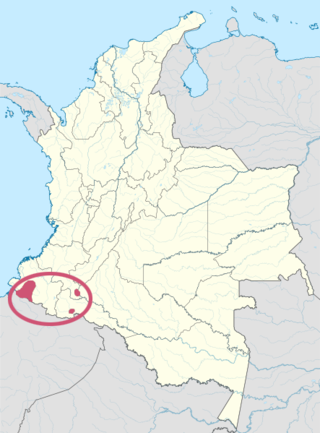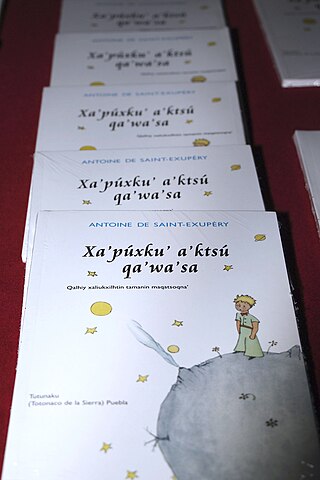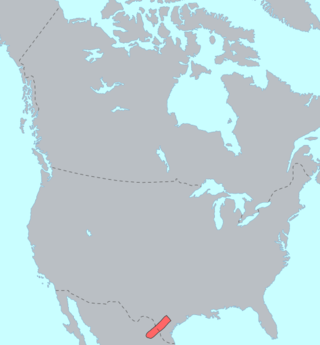A relative clause is a clause that modifies a noun or noun phrase and uses some grammatical device to indicate that one of the arguments in the relative clause refers to the noun or noun phrase. For example, in the sentence I met a man who wasn't too sure of himself, the subordinate clause who wasn't too sure of himself is a relative clause since it modifies the noun man and uses the pronoun who to indicate that the same "man" is referred to in the subordinate clause.
Suffixaufnahme, also known as case stacking, is a linguistic phenomenon used in forming a genitive construction, whereby prototypically a genitive noun agrees with its head noun. The term Suffixaufnahme itself is literally translated as "taking up of suffixes", which can be interpreted as the identical case marking of different but referentially-related phrases, with the presumption that nominal phrases possess a flat or non-configurational syntax. Across syntactic theories, case is seen as a bundle of features, and case agreement as the identity of case features. It was first recognized in Old Georgian and some other Caucasian and ancient Middle Eastern languages as well as many Australian languages, and almost invariably coincides with agglutinativity.
In syntax, verb-second (V2) word order is a sentence structure in which the finite verb of a sentence or a clause is placed in the clause's second position, so that the verb is preceded by a single word or group of words.
In linguistics, polypersonal agreement or polypersonalism is the agreement of a verb with more than one of its arguments. Polypersonalism is a morphological feature of a language, and languages that display it are called polypersonal languages.
In linguistics, center embedding is the process of embedding a phrase in the middle of another phrase of the same type. This often leads to difficulty with parsing which would be difficult to explain on grammatical grounds alone. The most frequently used example involves embedding a relative clause inside another one as in:

The Aslian languages are the southernmost branch of Austroasiatic languages spoken on the Malay Peninsula. They are the languages of many of the Orang Asli, the aboriginal inhabitants of the peninsula. The total number of native speakers of Aslian languages is about fifty thousand and all are in danger of extinction. Aslian languages recognized by the Malaysian administration include Kensiu, Kintaq, Jahai, Minriq, Batek, Cheq Wong, Lanoh, Temiar, Semai, Jah Hut, Mah Meri, Semaq Beri, Semelai and Temoq.
Nyangumarta, also written Njaŋumada, Njangamada, Njanjamarta and other variants, is a language spoken by the Nyangumarta people and other Aboriginal Australians in the region of Western Australia to the south and east of Lake Waukarlykarly, including Eighty Mile Beach, and part of the Great Sandy Desert inland to near Telfer. As of 2021 there were an estimated 240 speakers of Nyangumarta, down from a 1975 estimate of 1000.
Manam is a Kairiru–Manam language spoken mainly on the volcanic Manam Island, northeast of New Guinea.
Iwal is an Austronesian language spoken by about 1,900 people from nine villages in Morobe Province, Papua New Guinea. Although it appears most closely related to the South Huon Gulf languages, it is the most conservative member of its subgroup.

Tiipai (Tipay) is a Native American language belonging to the Delta–California branch of the Yuman language family, which spans Arizona, California, and Baja California. As part of the Yuman family, Tiipai has also been consistently included in the controversial quasi-stock Hokan. Tiipai is spoken by a number of Kumeyaay tribes in northern Baja California and southern San Diego County, California. There were, conservatively, 200 Tiipai speakers in the early 1990s; the number of speakers has since declined steadily, numbering roughly 100 speakers in Baja California in a 2007 survey.
In linguistics, quirky subjects are a phenomenon where certain verbs specify that their subjects are to be in a case other than the nominative. These non-nominative subjects are determiner phrases that pass subjecthood tests such as subject-oriented anaphora binding, PRO control, reduced relative clause, conjunction reduction, subject-to-subject raising, and subject-to-object raising.
Roviana is a member of the North West Solomonic branch of Oceanic languages. It is spoken around Roviana and Vonavona lagoons at the north central New Georgia in the Solomon Islands. It has 10,000 first-language speakers and an additional 16,000 people mostly over 30 years old speak it as a second language. In the past, Roviana was widely used as a trade language and further used as a lingua franca, especially for church purposes in the Western Province, but now it is being replaced by the Solomon Islands Pijin. Published studies on Roviana include: Ray (1926), Waterhouse (1949) and Todd (1978) contain the syntax of Roviana. Corston-Oliver discuss ergativity in Roviana. Todd (2000) and Ross (1988) discuss the clause structure in Roviana. Schuelke (2020) discusses grammatical relations and syntactic ergativity in Roviana.
Ughele is an Oceanic language spoken by about 1200 people on Rendova Island, located in the Western Province of the Solomon Islands.
Maká is a Matacoan language spoken in Argentina and Paraguay by the Maká people. Its 1,500 speakers live primarily in Presidente Hayes Department near the Río Negro, as well as in and around Asunción.

Located in the region of Colombia and Ecuador, the Awa or Awa Pit speaking people is an indigenous group settled between the Andes Mountains and the Western Coast. Awa Pit or otherwise known as Cuaiquer, in both group and name, is classified as part of the Barbacoan language. Another term that this group goes by is the "Inkal Awa" or "the mountain people", to distinguish themselves from other indigenous groups within that region. Awa pit is classified by UNESCO as a severely endangered language. The Awa pit language has a subject–object–verb structure and has adopted the Latin script. Grammatically, Awa pit uses a characteristic conjunct/disjunct system of verb suffixes for person-marking which displays similarities with some Tibeto-Burman languages, such as the Newari language of Kathmandu.
Adang is a Papuan language spoken on the island of Alor in Indonesia. The language is agglutinative. The Hamap dialect is sometimes treated as a separate language; on the other hand, Kabola, which is sociolinguistically distinct, is sometimes included. Adang, Hamap, and Kabola are considered a dialect chain. Adang is endangered as fewer speakers raise their children in Adang, instead opting for Indonesian.

Guanano (Wanano), or Piratapuyo, is a Tucanoan language spoken in the northwest part of Amazonas in Brazil and in Vaupés in Colombia. It is spoken by two peoples, the Wanano and the Piratapuyo. They do not intermarry, but their speech is 75% lexically similar.

Biloxi was a Siouan language, which was once spoken by the Biloxi tribe in present-day Mississippi, Louisiana, and southeastern Texas.
Koro is a language spoken in Arunachal Pradesh, India.

Totonac is a Totonacan language cluster of Mexico, spoken across a number of central Mexican states by the Totonac people. It is a Mesoamerican language and shows many of the traits which define the Mesoamerican Linguistic Area. Along with some 62 other indigenous languages, it is recognised as an official language of Mexico, though as a single language.






